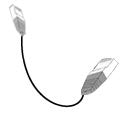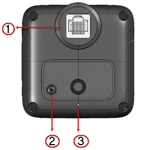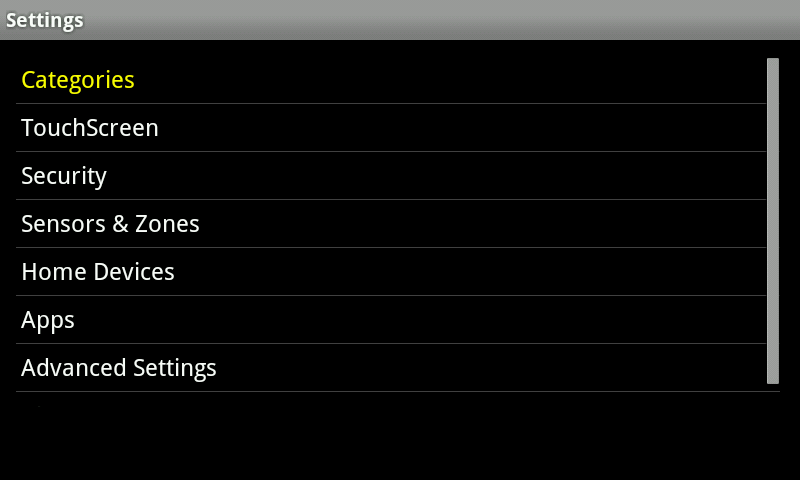Compact Wireless Weather Proof IP Camera. iCamera is Day and Night Network Camera with VGA resolution and 802.11n WiFi connectivity. There are two deployment scenarios for the iCamera product. The design accommodates both environments for outdoor IP54 and indoor application. It supports H.264 Baseline, MPEG-4 and Motion-JPEG triple codec and two codec streaming simultaneously.The iCamera is a True Day/Night IP camera with VGA resolution and 802.11n WiFi connectivity. Click on the link below for a guide to pairing the iCamera to your Touchstone system.
Specifications Installation Pairing Resetting
SPECIFICATIONS
- Standalone Design. The iCamera is a standalone system with built-in CPU and Video encoder. It requires only a power source and a connection to your Wireless iHub.
- Multiple Video Compressions. The iCamera supports H.264, MPEG4 and MJEPG video for different image compressions.
- Suitable for Home, Business or Public Facilities. Whether for Home, Business or Public Facility surveillance, or just for entertainment and fun, the iCamera has the features you need.
- Diagonal View Angle of 60 degrees
- Supports 802.11n Wireless Standard. The 802.11n standard provides backward compatibility with the 802.11b and g standards. The iCamera can work with all 802.11n, 802.11b and 802.11g Wireless stations.
- Wired and Wireless Network. The iCamera can be connected either with wire or wirelessly to your network.
Front of Camera
1) IR LED – IR LEDs provide illumination at night or in a dark environment.
2) Night Mode Lens – No physical adjustment is required for the lens. Please note that the image quality will be degraded if the lens cover is dirty or smudged.
3) PIR Lens – The PIR (Passive Infrared) lens is used for motion detection by measuring changes in the infrared (heat) levels emitted from surrounding objects.
4) Day mode Lens – No physical adjustment is required for the lens. Please note that the image quality will be degraded if the lens cover is dirty or smudged.
5) Network indicator (Green LED) – On – LAN/Wireless connection established. Off – No active connection on the corresponding LAN port, or not associated to Wireless AP. Flashing – Data is being transmitted or received.
6) Power/WiFi indicator (Green LED) – On (Green)- Power is on. Off – Power is off. Flashing – Wifi signal-strength indication.
The LED indicates SNR for the first 5 minutes after the camera is powered on. Then it will stay solid to indicate power LED for 5 minutes when wireless setup is ready.
- Flashing Low at 1/2Hz – WiFi signal is weak, SNR < 15 dB
- Flashing Middle at 2Hz – WiFi signal is acceptable, SNR 15-22 dB
Flashing High at 5Hz – WiFi signal is strong, SNR > 22 dB
7) WPS indicator – On – If the WPS association fails, the WPS LED will be on continuously for 5 seconds. Off – WPS function is off. Flashing – WPS association is in process. The LED goes off when the connection is complete.
Rear of Camera
1) LAN Port – Use standard Ethernet cable (RJ45 connectors) to connect your PC to the port for installation and configuration. The port is also used for power connection when the camera is under wireless mode. A customized PoE (Power over Ethernet) splitter, as a Y-cable, for both Ethernet and DC Jack is provided.
2) Reset – This button has two (2) functions:
- Reboot. When pressed briefly and released, the iCamera will reboot (restart) itself.
- Reset to Factory Default. To reset to factory defaults: Step 1 – Power On, Step 2 – Keep holding the Reset Button down for 30 seconds, then release.
What’s In the Box
 |
 |
 |
 |
 |
| Camera | Stand | DC Power Adapter | AC Power Adapter | Y-Cable |
 |
 |
|||
| Ethernet Cable | Dust Cap |
Setup
A. Connect the Ethernet cable included with your camera into the LAN Port on the camera.
B. Connect the other end of the ethernet cable to the connector of the provided Y-Cable.
C. Connect the other end of the provided Y-Cable to the LAN port of the Hub.
D. Connect the supplied power adapter to the Y-Cable and plug the power adapter into a wall outlet.
E. Confirm that both the POWER and NETWORK LEDs are illuminated on the front of the camera.
Installation
F. Log into your system, and navigate to Settings>Cameras>Add a Camera and follow the onscreen prompts until you can view live video in your portal.
1. Unplug the Y-cable and power from the camera and place the camera in it’s desired location.
Locating
2. Connect the Ethernet cable to the LAN port of the camera.
3. Connect the DC cable to the Ethernet cable.
4. Connect the supplied power adapter to the DC cable and power up the camera.
- The power LED should come on briefly, then start to blink, It will blink during startup for approximately 15-20 seconds. The Power LED will turn solid when the camera is completely powered on.
- The Network LED should be ON.
Pairing
To a Hub
You can add cameras when you activate Touchstone, or at a later time. If you want to add a camera that was not included with the original Touchstone package, make sure your service provider supports it.
To add a camera, click SETTINGS on the toolbar.

Click Cameras to display the camera settings page.

Click ADD CAMERA and follow the on screen prompts.
To a Touchscreen
From the main page of the Touchscreen, touch the Settings Icon  and enter your 4 digit master code. This is the code that you use to arm and disarm your system. Choose ‘Home Devices’ from the categories page.
and enter your 4 digit master code. This is the code that you use to arm and disarm your system. Choose ‘Home Devices’ from the categories page.
Select ‘Cameras’ and then choose ‘Add a Camera’.
If this is the first camera you are adding to your system, or it’s been awhile since a camera was added, you will be asked to run a Network test. Click ‘Next’ to begin the test and ‘Next’ again once the green check mark appears.


Following the instructions included with your camera, prepare it to be added to your Touchscreen. Click the ‘Next’ button to progress through the setup.
Once the Touchscreen locates your camera, you will be shown the general information. Click ‘Accept’ and then click ‘Next’ to proceed to the next screen.

The camera will now check to see if it’s firmware is up to date. If an update is needed, it will download the file at this time. Once the ‘Upgrading Firmware’ and ‘Configuring Camera’ lines say ‘Done’ beside them, click ‘Next’ to proceed to the next screen.

Once the camera pairs, you will have the opportunity to give your camera a name and select the video quality. Make sure to give your camera name that you’ll recognize such as ‘Driveway Camera’.

Now that the camera is named, it’s time to locate it where you want. Follow the onscreen instructions and select ‘Verify Camera’ when the camera is ready. Once the camera is located, click ‘Next’.
Your camera is now ready to be aimed where you want it and used.
Defaulting
EEnsure that the ethernet cable is connected to the iCamera1000 and the other end is connected to the open port of the white Y dongle.
The other end of the white Y dongle should be connected to the LAN port of the HUB.
Make sure the power adapter is connected to the white Y dongle and to a live power outlet.
On the back side of the iCamera1000, there is a small black button. Hold this button down for 30 seconds to restore the camera to default settings. DEFAULTING THE CAMERA WILL REQUIRE IT TO BE REPAIRED TO THE HUB.
When the center LED (power) and the left most LED (network) are lit and stable, the camera is ready for pairing.









